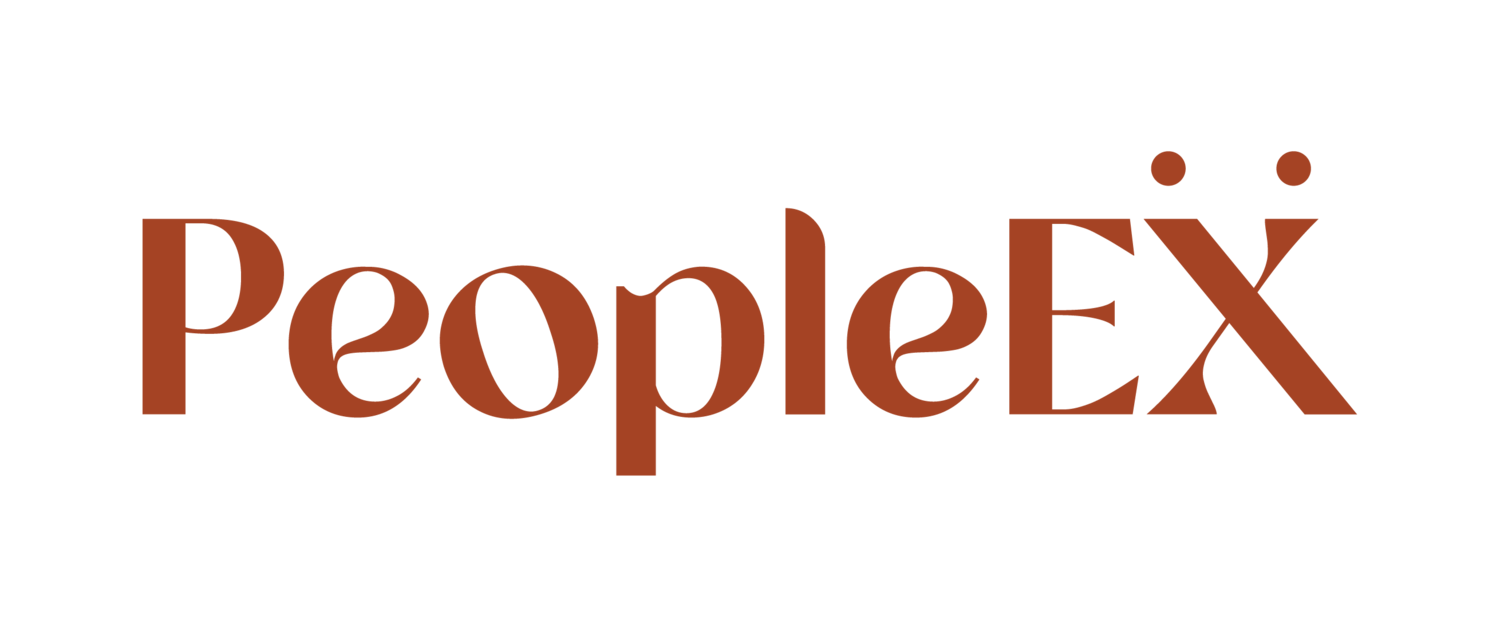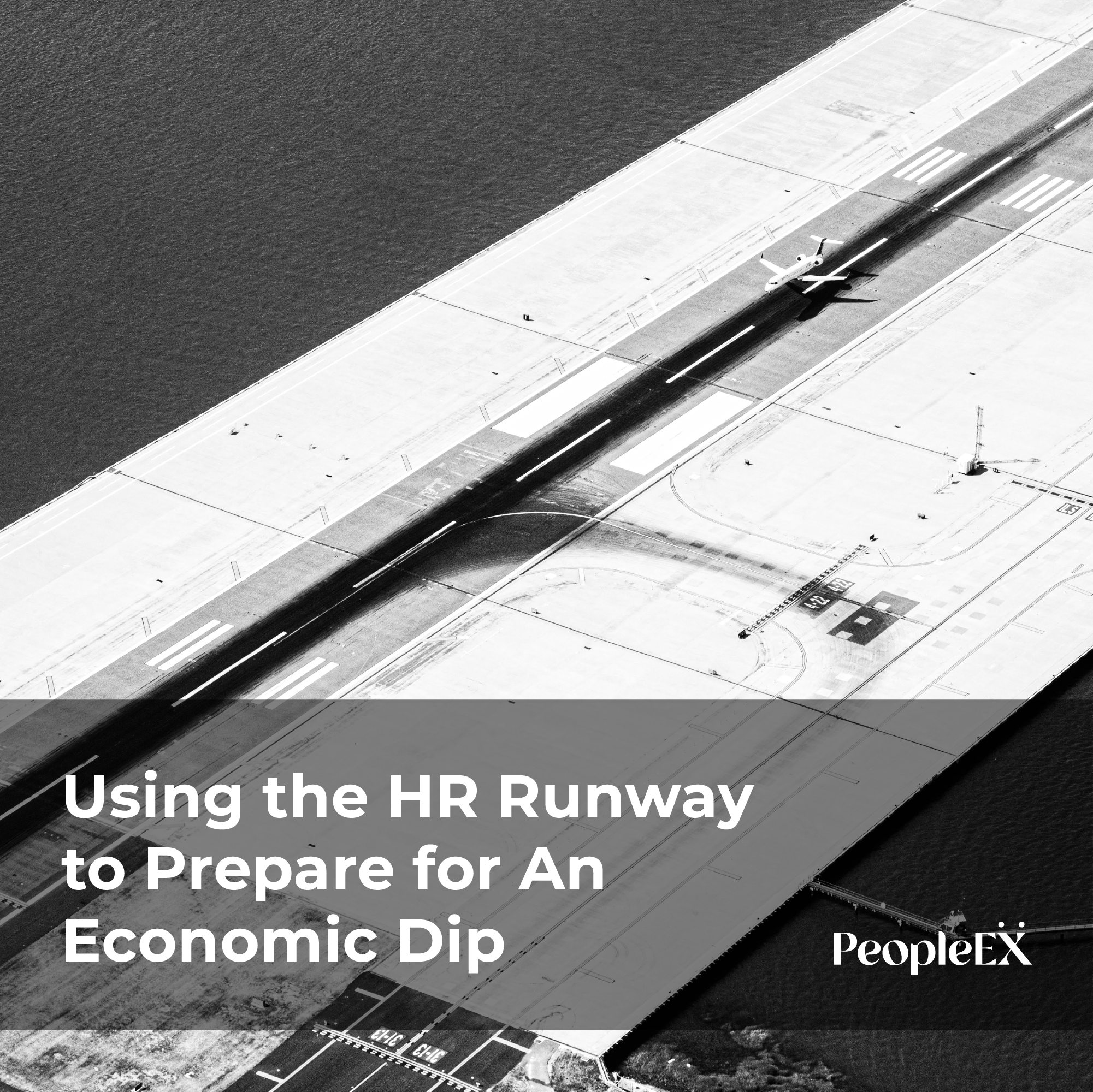Using the HR Runway to Prepare for An Economic Dip
At the moment, organisations are, rightly so, a little wary about what's to come. So, how can we prepare now? Where to go next?
As a starting point, we want to share with you the HR tool we developed that is helping organisations transition through these times of uncertainty.
It's called the HR Runway.
What is the HR Runway?
In aviation speak, a runway is where an aircraft lands and takes off.
In HR speak, a runway is how an organisation can prepare for 'landing and take off'. It is the steps an organisation can go through to weather any downturn or change that requires a quick pivot.
Organisations can jump to restructures when things get tough without exploring the myriad of available alternatives. The HR Runway highlights the steps an organisation can take before hitting the end of the runway by considering layoffs.
We created the HR Runway for two simple reasons: firstly, we care about people. And secondly, we care about your business. Our purpose is 'people for better' after all!
There is one thing we know for sure: when companies start laying people off, morale plummets and there is a tremendous impact on productivity. The HR Runway is a process that centres employee well-being, and ensures organisations are ready to 'take off' when the economy bounces back. The organisations that jump to layoffs will face enormous expenses in hiring, retraining and rebuilding the knowledge and culture lost. The HR Runway is a people-first pragmatic analogy considering all available options before layoffs. It puts people first.
What puts you on the HR Runway?
If your organisation faces a rise in workforce costs relative to revenue, this may be the primary driver that puts you at the very start of the runway.
But not every organisation needs the runway. Your bottom line may not warrant it. Keep an eye on the market and look out for 'first-mover' companies (your competitors or industry buddies making people and structural changes ahead of you). Market changes may indicate that shifts are happening, and it's time to start thinking about your runway.
Ideally, we want no organisation to be on the runway. But we're realistic and recognise that the landscape changes from time to time. The HR Runway is a tool organisations can draw on as and when it's needed.
How to use the HR Runway?
Outlined below are our ten runway steps. The order of the steps is considered and measured (but can be swapped around to suit your business).
Step 1 is the first lever an HR practitioner can pull. When we need to tighten further, we move to step 2, then step 3 and so on. Pulling a lever one at a time enables you to solve the issue you're in and/or buy you some time before the next lever needs to be pulled.
These steps prepare an organisation for change, minimise the negative impacts on an organisation's people and position the organisation well to 'take off' again once the market improves.
1. Plan + retain.
Ask yourself: Who are the people we can't afford to lose? If you don't have a retention plan for those key positions, create one! You should regularly check in with all your team, but this is especially important for key talent. Talk, say hello, know what's important to your people, and ask how they feel. Retention and relationship building go hand-in-hand.
If you hear murmurs or know that the purse strings are tightening, plan your runway actions and pull together a project or response team. Tip - someone who knows the budget needs to be on the team!
2. Ask for ideas.
Talk with your people! Be as transparent as you can be about the situation you're in. Give employees ongoing opportunities for feedback and discussion. Your people may have ideas for alternative ways of working or different working arrangements that might solve your issue and/or buy some time.
3. Check your burn rate.
If your financial burn rate allows, keep investing in talent and hiring to ensure that whatever good talent is on the market is reserved for your company. And up-skill current employees by giving them greater scope and responsibilities beyond their current roles.
4. Hiring freeze/not replacing.
Hiring freezes allow for some breathing time. It's a way of conserving revenue while ensuring your current workforce is retained (and therefore looked after). Not replacing people can place additional strain on existing staff, so think carefully about resourcing and, if needed, rescope roles so that critical activity can still be managed.
5. Review contingent + fixed term placements.
Take stock of and define comprehensive terms and conditions for all your contingent workers and contractors, knowing that fixed-term and contingent contracts will be the first to go if budget cuts demand it. Alternatively, this type of workforce might support the delivery of critical projects during any downturn without injecting further permanent headcount costs.
6. Reduce leave liability.
Untaken employee leave, which is typically paid out on termination, is recorded on the balance sheet as a liability as it poses a cash flow risk. We can reduce leave liability by encouraging employees to take annual leave. Taking leave is good for people's health and well-being. We all need rest and recovery time.
7. Review perks + benefits.
Assess your perks + benefits with a discerning eye. Ask: What is the ROI? Commit to assessing all your perks + benefits to understand the long-term costs and impacts. Your people won't mind if the perks are temporarily pulled back if it means that people and jobs are retained. And, remember, what matters more is what you offer, not necessarily how much. Consider linking perks to purpose.
8. Help by looking at HR spend.
Look for ways to optimise HR costs. We can clamp down on non-essential HR initiatives, review office expenses, streamline payroll processes, consider what can be automated, and implement a strict procurement approval system. Consider where costs can be reduced without compromising your people's well-being.
9. Working patterns (voluntary), distribution + upskilling.
This step is about reducing staffing costs without letting anyone go. We can reduce the working week or simply ask the team for voluntary opt-in for reduced hours or pay cuts. Also, think about the distribution of work as well as cross-skilling and upskilling. If you've been transparent with your people, the intent, and the measures taken to date, there is likely to be goodwill amongst the team to pitch in and help.
10. Restructures + redundancies.
If you get to this point and have to restructure, invest the time in your organisational design first. Identify the key roles and skills that will enable you to navigate the short-term while not losing sight of the long-term and what you will need to rebuild. In making the change, employers must act in accordance with the principle of good faith under the Employment Relations Act 2000 throughout the restructuring process, meaning that employers must be communicative, act fairly, and be active and constructive in maintaining a productive employment relationship. Dignity and respect need to be paramount. This is a hard step and one that should never be taken lightly. Put yourself in your people's shoes with the approach you take.
A conclusion
Unconsidered layoffs as a response to economic downturns rarely help senior leaders accomplish their goals. Studies show that layoffs don't always improve profits.
We encourage any business, particularly the HR teams, to consider adopting the HR Runway. Your staff morale, engagement and productivity are dependent upon the actions you take and the leadership you demonstrate.
And remember: Who will help you innovate and bounce back as the market picks up? Your people!
The HR Runway can allow an organisation to ride out any temporary economic dip. It is a more compassionate and creative approach to uncertainty that will retain and even boost employee morale (and productivity). Yet, on the other hand, the organisation that jumped to layoffs will face enormous rebuilding expenses.
If you're facing a period of uncertainty and considering some options that will undoubtedly impact your people, please get in touch with us. We've helped numerous clients navigate change through our HR Runway approach. We hope you avoid the runway, but we're here to support you with your people plan if you find yourself on it. Our goal is to help you emerge from the downturn with a stronger, more unified team.
Download the HR Runway cheat sheet
We’ve created a cheat sheet which summarises the HR Runway. You’re welcome to download it free of charge.


